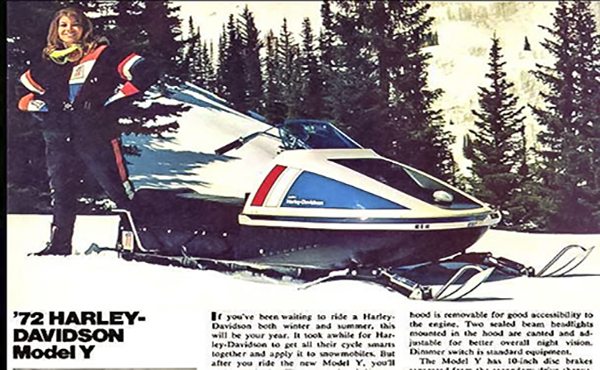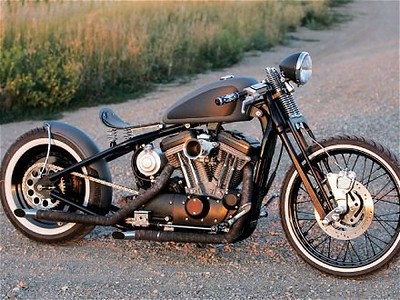Harley Davidson recently unveiled the new look Sportster for the future. Most motorcycle enthusiasts are excited and rightly so we suppose. However, we can’t help but think of it as if the company quietly took the old sportster by the elbow, led it out the back door of the pub, shot it in the head and unceremoniously tossed it in the dumpster.
Making it’s soft debut in 1952, the Model K had a flathead engine. Then in 1957, as the Russians launched Sputnik 2 carrying Laika, the first dog to enter space, the Americans gave the world the Sportster XL. Designed with the more familiar overhead valve engine, which had a look not much different to the model we know and love today. The XL “Ironhead” had a healthy run until 1986, when it was replaced by the “Evo” 883, 1100 and 1200 engines with alloy heads.

Before we move on, to impress the importance of the overlooked model K on you, dear reader, consider that this model was the first to sport a hand clutch and foot gear shifter. So, it’s 1957, you want to go fling the newly invented Frisbee, a little plastic disc, around in a lovely green field with your friends and then maybe indulge in a chocolate milkshake to cool down afterward. How are you going to get there? The Triumph’s, BSA’s and Norton’s are good looking bikes sure, but you aren’t going to turn any heads with one of those limey lawnmowers. Once again, American muscle comes to the rescue. This new offering is just as sleek as the British motorcycles, only more powerful, and with the thundering engine sound only Harley Davidson can offer. A year later, the iconic peanut fuel tank makes it’s first appearance, and a star is born.
By the late 1960’s, the sportster had cemented it’s place in American culture, and western culture as a whole. The lightweight and uncluttered style made it an ideal motorcycle for customization. With surprisingly little knowledge, a can do attitude and a bit of elbow grease any average Joe could transform his sportster into something he could be proud of. All of a sudden, there were a few more choppers and bobbers roaring around the streets. The only difference is that they weren’t real choppers or bobbers, they were Sporty’s with a bit of love poured into them.
Most sportster owners will be able to attest to being chirped about riding a ‘girls bike’ at least once. The apparently degrading moniker has been around for a few decades now. It has always been attributed to the lightweight frame and smaller engine capacity in comparison with other Harley models. While no one is sure how it came about, it has been suggested it came from bigger Harley owners who were disgruntled with the performance Sportster owners enjoyed in comparison. However, it is far more likely it just came from an emasculated feeling pavement jockey, or a cyclist. If any sportster owners of the female, or any persuasion really, ever read this, we would be honored to ride with you.
The 70’s were a wild time for anyone who lived through them, and Harley Davidson too. During this time, Harley was under ownership of the AMF corporation. To say some questionable models were produced during this time could be fair, such as the 650 “Confederate Edition” motorcycles that were factory accessorized with decals of the confederate flag, of which there were quite a few Sportsters among that number. Though arguably in poor taste now, these motorcycles are some serious collectors pieces, as are many of the other strange creations produced during the AMF era; a Harley Davidson golf cart, snow mobile, and some really nifty looking little 350cc Aermacchi/Harley Davidson bikes that competed well with other imports until 1978 when the division was sold to Italian company Cagiva.
In 1981 Harley Davidson was bought back from AMF by a group of dedicated Harley executives, who brought a teetering company back from the brink through their dedication and passion for the brand. The legendary Evil Knieval rode a Harley XR-750 throughout the 1970’s, which is a close cousin of the sportster, and in 1983 this legacy was capitalized on with a special Sportster version of the bike, the XR-1000, which was very well received by the public.

While the Sportster is not really associated with speed today, it was born breaking records. Cal Rayborn set the land speed record at the Bonneville Salt Flats for a motorcycle in 1970, powered by a single Sportster engine. The year before, a legend by the name of Leo Payne was the first person to break the 200 mph mark on a motorcycle. He was riding his own custom built Sportster.
Year by year, the Sportster has seen small changes mold it into the bike we know and love today. It was a sad day when the last kick start engine rolled off the production line in 1979. It was a sad day when the classic chain drive was replaced with the more reliable belt drive system in 1993. It was likely a day of mixed emotions when the old school carburetor was replaced with a fuel injection system in 2007. But these were all minor, palatable improvements to a motorcycle with a legacy spanning over 60 years.

Now, we are looking at something entirely different. The peanut tank is gone. The classic curved back fender is gone. This bike looks more like the old V-Rod’s little brother, who has secretly been juicing in the back shed for the past few years, waiting for his moment, than a Sportster. Comparing the engines reveals much of the same, as the old 1250cc V-Rod produced 125hp, while the new 1250cc Sportster S produces 121hp and both look as if they’ve been stuffed into the frame. Given the bike weighs two thirds of what the V-Rod weighed, that will translate to an immense amount of power on the road. It also has an electronic speedometer, with three different modes; sport, road and rain. There is enough tech put into this bike to make a silicon valley programmer interested in motorcycles. It has nice fat tires though, a plus we suppose.
While the 883 Iron is still available from Harley, there is no word yet on whether a variation will be available in the now ‘classic’ styling. For all we know, it could only be a couple of years and the old sporty might become just that, an old sport. You won’t see any chopper, bobber or unique builds coming out of this new version of the Sportster. This is a motorcycle that seems geared for a new generation, for people who favor speed and precision over legacy and soul. A generation that isn’t interested in taking things apart, but rather replacing the whole thing when something breaks. We truly hope Harley surprises us with something else, and that we’re left with egg on our faces.
Unfortunately, our fear is that we have said goodbye, without even realizing it, to an icon.


Leave a Reply